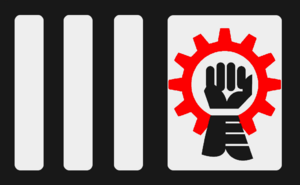Vithinja
This article is a work-in-progress because it is incomplete and pending further input from an author. Note: The contents of this article are not considered canonical and may be inaccurate. Please comment on this article's talk page to share your input, comments and questions. |
Vithinja (Ruþí: Viþjinsk)is a constitutional monarchy in Kiro-Borealis, just north of Northern Levantia. It borders Caergwyn in the south among the ‘islands name’ islands. To the west on the other side of the Kilikas Sea lies Kiravia while to the south across the sea lies Faneria. Vithinja is connected to Caergwyn via a huge bridging project that connects Vithinja to the Levantian mainland. The Vithinjan capital is Rolvsvik, despite being only the 5th largest city in the nation. The two largest cities are Tår Bringär and Cärviken, both of which lie within the “islands name” island chain. Vithinja has a population of ~64 million people. The vast majority of the population lives either in the "islands name" isles, or the more temperate south-western coastline.
Vithinja is a relative newcomer among the nations of today, only existing in it’s current form for the last 150 years. The nation originates from two separate peoples and a number of different nations. Around the year 900 the first group of settlers who would become the Ruthans left their homeland in western Levantia to sail for new lands in the north. They started settling many of the islands along the northern coast of Levantia as well as finding the lands of Rutheria. (Ruþí:Fhres-Ruthirí)
The vithinjan population is mainly divided into the Ruthans, the ruling people as well as the Gvergoles (Ruþí: Gvärgöthes]], [[Siarvish|Siargogle), who make up the majority of the population. The history behind this situation is quite complex, the former natives of the region have been driven extinct by the collective effort of both of these peoples, and they arrived at about the same time to the Kira-Borealis mainland and the "islands name" isles. The warrior culture of the Ruthans allowed them to set themselves up as the rulers of these lands, but in modern times this fact has become more and more controversial among the larger number of Gvergoles people.
Viþinjske Köningsrigge Zyndicatist (Ruþí) Viþjinsk | |
|---|---|
|
Flag | |
Motto: 'Fhremodt imot himmlvägnen' 'Forwards towards heavens road' | |
Anthem: 'Pö hemjske vägnen' 'Journeying Home' Royal anthem: 'E sort hänt kriegr' 'A black handed warrior' | |
| Capital | Rolvsvik |
| Largest | Tår Bringär |
| Official languages | Ruthani |
| Recognised national languages | Ruthani, Siarvish |
| Recognised regional languages | *Caergwyn* |
| Ethnic groups |
|
| Demonym(s) | Ruthan, Ruthie |
| Government | Unitary Semi-Syndicated Constitutional Monarchy |
• King | Rolv XI |
| Rikart | |
| Area | |
• Total | 1,099,191 km2 (424,400 sq mi) (rank here) |
• Water (%) | 6.83% |
| Population | |
• 2020 estimate | 67,240,000 |
• 2018 census | 67,098,250 14 761 615 full citizens |
• Density | 61.1/km2 (158.2/sq mi) |
| GDP (nominal) | estimate |
• Total | $3,236,138,743,500.00 $3.236 trillion |
• Per capita | $48,132 |
| Gini (2019) | medium |
| HDI (2019) | very high |
| Currency | Ruthan korunmärck (ʍ) |
• Summer (DST) | UTC+0 |
| Date format | yy-mm-dd |
| Driving side | left |
| Calling code | +61 |
History
Pre-Unification Era
Aboriginals
The Vithinjan lands in Kiro-Borealis once housed small tribes of a somewhat unique culture. Little remains of these natives as most of their history is lost with only small amounts of archeological evidence that they ever even existed.
First Settlers
Two legends from two very different cultures speak of how the beautiful lands of Vithinja was once first discovered. The Ruthans take their name from the leader of the first settlers, Ruth, who left his home in western Levantia to explore the north, searching for a new home. At first he settled the island of Nordland, but near the end of his life he left to discover the Ruthinja mainland.
From the otherside of Levantia a group lead by three brothers lead a small groupof settlers to cross the ocean towards the Vithinjan isles.
Tribal Period
Ruthan Unification
Kingdoms Era
First Kingdom
First Collapse
Second Kingdom
Second Collapse
The Unforgotten Peace
The 100 Year Republic
The Great War
Third Kingdom
Syndicalisation
Geography
Climate
Vegetation
Politics
Constitution
National Syndicalism
The Vithinjan way of syndicalism is quite strange partially since they do not have full control of the government.
Citizenship and Residents
Military
Economy
Vithinja exports marine vehicles, engineering products, refined steel products as well as pharmacueticals and medical equipment Vithinja also produces mostly for domestic needs: Weapons...
Resources
Vithinjas natural resources is mainly made up of a mixture of aluminum, fish, iron ore and crude petroleum. A lot of these resources are used to produce more refined goods for export.
Energy
Vithinjan energy is largely made up of hydroelectric and geothermal power, with the difference mostly being made up by nuclear power plants. As the economy generally produces a surplus Vithinja always looks to export whatever energy it can.
Infrastructure
Taxes
Military Industrial Complex
Demographics
Population
Language
Religion
Church of Rolv
The church of Rolv is a branch of protestantism with some quite radical differences. It has added clauses for means by which one can enter into heaven that include military service and sacrifices for the good of ones people.
